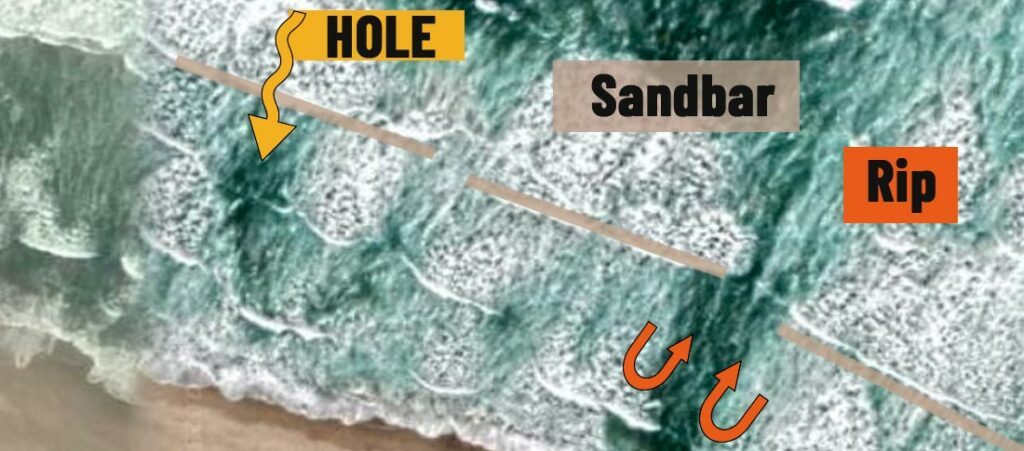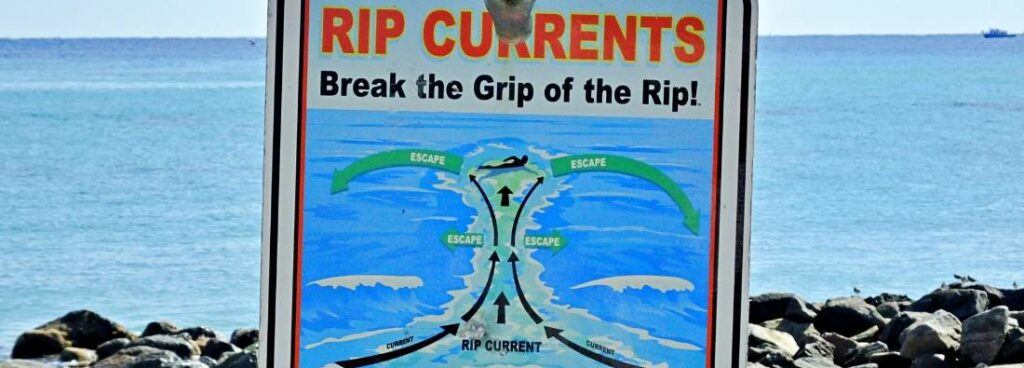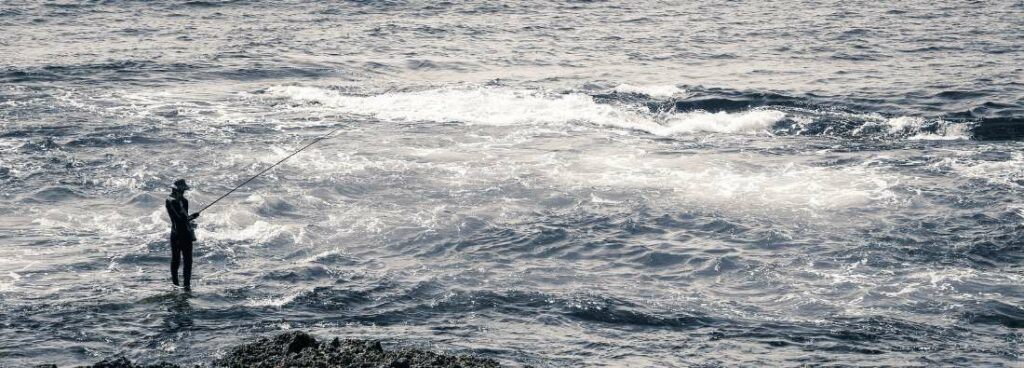Stories Worth Reeling In...
Last Updated on September 18, 2023
Hey! Are you tired of casting into the surf without a bite? Trust me, I’ve been there, and that’s why I’m going to “talk about” why it is crucial to learn how to spot fish in the surf and provide tips to fast-track your progress.
By the end of this post, you’ll better understand surf structure, elements that influence fish location, and strategies for identifying where the fish are dwelling.
Grab your notebook;)
Table of Contents
Signs of feeding activity, such as splashes or birds diving into the water, can help determine where to begin your search. Try to locate regions where fish may be present by looking for underwater features like drop-offs, rocks, holes, or troughs, searching the water’s color variations, and keeping a sharp eye on the baitfish’s behavior.

Let’s begin by developing a fundamental understanding of surf structure before diving into the methods for spotting fish in the surf.
The surf zone is an ever-changing environment and understanding the underlying structure is crucial for locating fish.
Sandbars, humps, rips, eddies, and other features can be found throughout the surf zone. These structures significantly affect how fish act and should be considered when on the lookout.
Sandbars are ridges of sand that develop parallel to the beach and can cause waves to break. The troughs that form between sandbars are attractive to baitfish as they can hide there and gather food.
To find their next meal, “fish that eat other fish” typically linger in these places, making it perfect for some bass fishing!
Humps are similar to sandbars, but they form perpendicular to the shoreline.
Humps in the surf zone can calm the water and draw in baitfish, making them excellent hiding spots for predacious fish.
Water that is flowing in a different direction creates rips and eddies. They can be brought on by several things, such as wind and currents, and the ever-changing tides. For predatory fish, rips and eddies can concentrate baitfish and offer prime feeding grounds.
The surf zone is a constantly shifting environment.
By observing its structures, you may determine where fish are most likely present and increase your chances of catching them.
Look for variations in water color and surface
» A trough may be indicated by a calm patch in the surf
» A rip can be indicated by a foamy or agitated area.

Currents and tides: Fish behavior and place in the surf are significantly influenced by tides and currents. Fish may travel into shallower water to feed during high tide. When the tide is low, on the other hand, they might dive deeper to avoid predators.
Water temperature: Water temperature can also influence fish behavior. For instance, in warmer months, baitfish will go into shallower water, luring bass and other predatory fish.
Another important thing to be aware of when looking for fish is how active the baitfish are. Baitfish jumping or flipping on the surface is a good sign that predatory fish are close.
Fish behavior can also be influenced by the makeup of the seafloor. For instance, baitfish may find sanctuary in rocky locations, while fishing may be less appealing in sandy areas.

Observing the behavior of birds Keeping an eye out for bird activity is one of the simplest methods for finding fish in the surf. Birds plunging into the surf are a good sign that there are baitfish and predatory fish around.
Utilizing a polarized lens is another method for seeing fish in the surf. It is simpler to locate fish using a polarized lens since it helps reduce glare and lets you see into the water.
Recognizing rips and troughs: Another method is identifying rips and troughs. As was already indicated, rips and troughs can make excellent feeding grounds for predatory fish.
Understanding surf line patterns: Understanding surf line patterns can also help you spot fish. For example, suppose you see a slick or calm area in the surf. In that case, it could mean a place where baitfish gather, making it an excellent place for predatory fish.
Pay attention to the color and texture of the surf line and any changes in how the water moves to help you find places with fish.
A cooler can serve various purposes for a surf fisherman, including storing food and drinks, transporting fish, providing a stable surface to sit or stand on, keeping bait fresh, and even offering entertainment with features like Bluetooth speakers for music, podcasts, and calls.
Overcast and rainy days can reduce shadows from your line, making bait more appealing to fish. High tide, especially at dawn or dusk, brings more fish into your fishing area due to increased water. Different species may prefer different tide levels.
The choice of bait depends on the specific fish species you want to target. While shrimp can attract most fish, using live bait like Mullet for Flounder or Herring for Mackerel can be more effective. It’s also important to consider the seasons, tides, and weather conditions.
When starting surf fishing, it’s essential to learn how to surf cast. Surf casting is similar to regular casting but emphasizes distance and accuracy to land your bait in the surf. You use an overhand cast technique for surf casting.
In surf fishing from the shoreline, you can catch various fish species, including Flounder, Rockfish, and Mackerel, along with other game fish besides deep-sea species.
Remember that finding fish in the surf requires observation and patience. You’ll soon recognize great spots where fish may be holding if you pay attention to the water and the surroundings.
This post was helpful to you and has given you the information and skills you need to go fishing more successfully.
Have fun fishing!